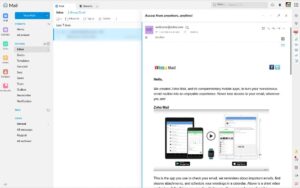Intel’s Staycation Challenge is one example of how talking about taking time off can encourage people to disconnect from work.

Image: Aleutie/Getty Images/iStockphoto
If managers want people to take vacation time during this coronavirus summer, they need to set a good example and step away from the computer themselves, executives and human resource experts said. Company leaders have to walk the talk to reinforce formal time off policies. Tech companies are tracking “vacation days used” as a new productivity metric and adding floating holidays to the calendar to avoid burnout.
Intel launched a Staycation Challenge to change the conversation around time off during a time when travel is unwise or impossible.
“Employees are being asked to submit their best staycation ideas and prizes will be awarded to help bring ideas to life and, most importantly, enable them to recharge,” said Julie Ann Overcash, Intel’s vice president of human resources and director of compensation and benefits. “We also encourage our employees to have open and honest conversations with their managers about their needs and what time off looks like for them, especially these next few months.”
Overcash said the company also has added two more floating holidays to the calendar this year for employees, one dedicated for mental wellness and the other for inclusive learning for US employees.
SEE: Return to work: What the new normal will look like post-pandemic (free PDF) (TechRepublic)
Peter Jackson, CEO at Bluescape Software, said that unused vacation time is a financial liability in the short term and the long run. He recently made the case to Bluescape’s parent company for changing the vacation policy from Paid Time Off to Responsible Rest Time.
“I didn’t understand this initially but we were accruing over $800,000 a year in back vacation pay,” he said. “Also, if we don’t promote vacation and getting offline, we create more costs: Healthcare costs, mental health care costs, and productivity costs.”
To avoid these financial liabilities and the risk of employee burnout, managers have to set the right tone by taking time off themselves. Kristen Hayward, Superhuman’s head of people, said that people follow the example set by their managers, which doesn’t always match the stated time off policy.
“A company’s actual vacation policy is the everyday behavior that people see,” she said. “Oftentimes in the past, when I didn’t feel I could take time off, it was a reflection of the culture.”
Rahul Vohra, the CEO of the email company, took a two-week unplugged vacation earlier this year and encouraged his employees to do the same.
This advice from company leaders and HR executives explains three specific steps managers can take to encourage team members to put some OOO time on the calendar.
Set an example people will follow
As the coronavirus continues to change everyone’s daily routine, taking time off from work is more important than ever. Superhuman’s Hayward said one component of this new reality is the multiple roles people have taken on since March as full-time caregivers, teachers, and even support staff for family and friends.
“As people are juggling these different roles, burnout is more of a risk than ever,” Hayward said.
Talking about time off is not enough. Companies have to set expectations around vacation time and then act on those priorities. Hayward said the company added two Care Days to the vacation calendar.
“We did not close the company down for the day instead we split Care Day in two and team members got to pick the day they wanted to take off,” she said. “We wanted to send the message, ‘Look, you take a day off and the company still runs without you.'”
Hayward said that senior leaders also communicated their plans to take a mental health day.
“That was important because the second we started doing that, we started seeing the requests come in,” she said.
Zoë Harte, the senior vice president of human resources and talent innovation at Upwork, said that the recruiting department at her company has instituted a policy to have one person on the team out every Friday.
“People know that there is coverage from their colleagues and it’s an expectation that everyone knows this time off is coming,” she said.
Talk about time off
Bluescape’s CEO Jackson took a more dramatic approach to changing the company’s policy on time off. At the end of Q2, the company cashed out all banked vacation time that employees were carrying and added it to paychecks.
“Now people still use ADP to request time off but they can take more time now,” he said. “We have also put the responsibility on managers to make it part of the weekly discussion with employees, not just send out documentation that no one reads.”
Bluescape is owned by Haworth, a furniture company based in Holland, MI. The tech company builds collaborative workspaces that allow team members to share files and tools in real time in a secure space. Jackson said that it took time to shift traditional attitudes that tie productivity to time spent instead of results achieved.
“Employees shouldn’t be bound by an arbitrary number of days they can take off; they should be able to take time off when it best suits them,” he said. “A refreshed, motivated, happy, employee can get more work done in two hours than a tired, overworked employee.”
Harte at Upwork said that managers have started checking in with team members on a regular basis about mental health. Managers ask people to rate their mood on a one to 10 scale by holding up the appropriate number of fingers during video calls.
“We want people leaders to engage with team members around emotional well-being as much as business deliverables,” she said.
Crunch the PTO numbers
In addition to modeling good behavior and talking about the health impact of time off, it also helps to look at the numbers. Several companies are looking at PTO time at a team level to see who needs an extra nudge to take a break.
Managers at Superhuman can track vacation time by quarter.
“We are implementing formal tracking to see if there are team-specific problems, such as inadequate staffing or leadership problems,” she said.
Hayward said she is seeing fewer long vacations and more long weekends and single days off during the week.
Jackson said that his managers also are analyzing who has taken time off and who needs to do so.
“Our leaders ask their people directly, ‘When are you taking time off,'” he said. “We’ve had internal discussions about managers’ responsibility for the mental health of their team.”
Hayward said that the customer support team at Superhuman often struggles to schedule time off, so the company hired an extra person to the team to provide flexibility.
“Our customer delight experience really differentiates us so we made an investment in the team to make sure people have the space they need,” she said.
Also see
Source of Article




